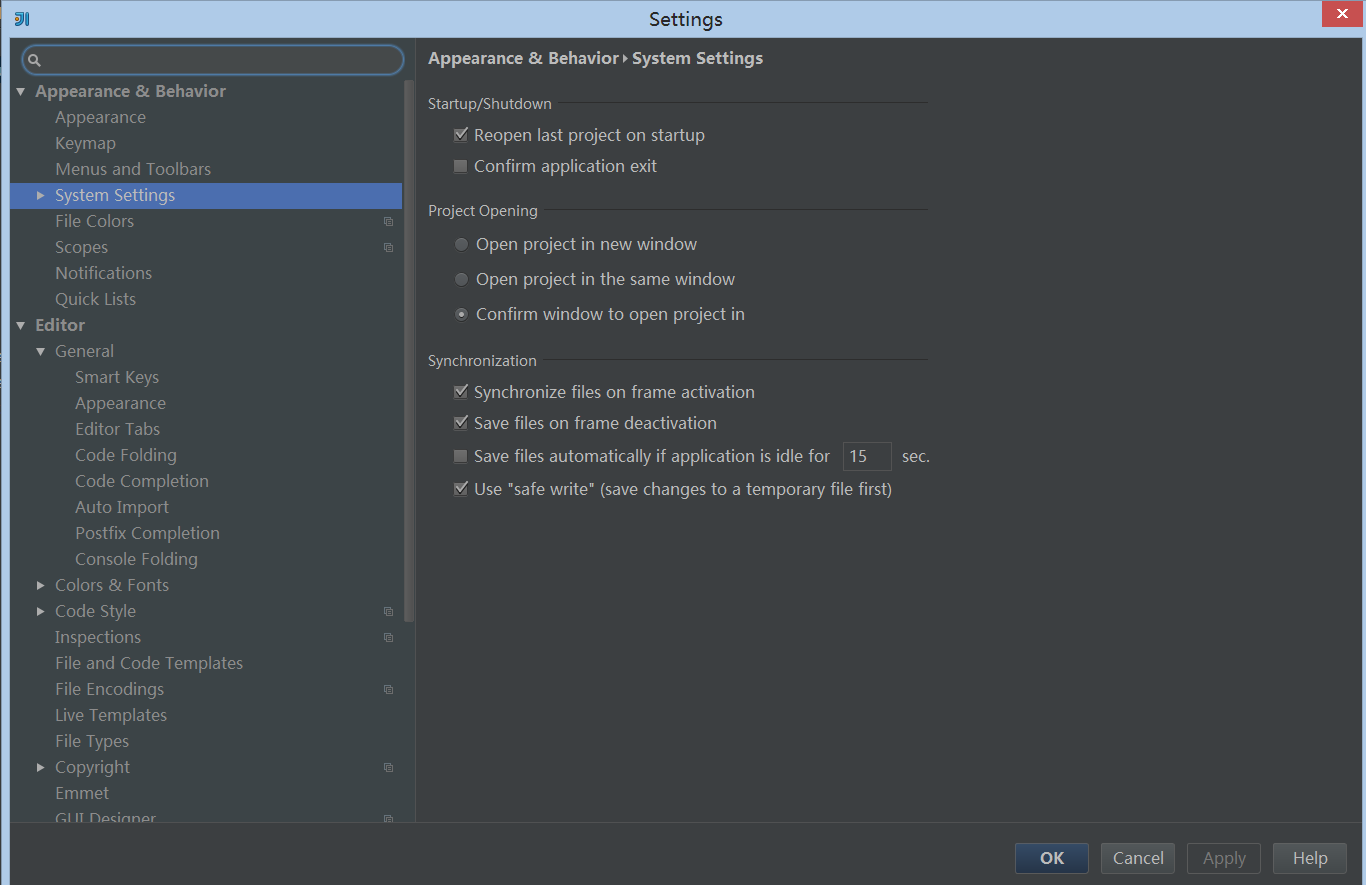Intellij IDEA 默认打开上次项目设置
本文共 260 字,大约阅读时间需要 1 分钟。
场景
默认情况下,每次打开Intellij IDEA,都会连带着打开上次打开的项目。如果不希望它每次打开时都连带的打开上次的项目,可通过“系统设置”进行配置。
配置方法
如下图所示,找到Intellij配置中的System Settings,右边的Reopen last project on startup,默认为勾选状态,即每次打开IDE时,会打开上次的项目。将此勾选去掉即可。同时,在Project Opening中还可以进一步配置打开新项目时是否新开一个窗口,是否在当前窗口,是否通过提示的方式让操作者进行选择。

你可能感兴趣的文章
nginx 配置 单页面应用的解决方案
查看>>
nginx 配置https(一)—— 自签名证书
查看>>
nginx 配置~~~本身就是一个静态资源的服务器
查看>>
Nginx 配置清单(一篇够用)
查看>>
Nginx 配置解析:从基础到高级应用指南
查看>>
nginx+php的搭建
查看>>
nginx+tomcat+memcached
查看>>
nginx+Tomcat性能监控
查看>>
nginx+uwsgi+django
查看>>
Nginx-http-flv-module流媒体服务器搭建+模拟推流+flv.js在前端html和Vue中播放HTTP-FLV视频流
查看>>
nginx-vts + prometheus 监控nginx
查看>>
Nginx下配置codeigniter框架方法
查看>>
Nginx之二:nginx.conf简单配置(参数详解)
查看>>
Nginx代理websocket配置(解决websocket异常断开连接tcp连接不断问题)
查看>>
Nginx代理初探
查看>>
nginx代理地图服务--离线部署地图服务(地图数据篇.4)
查看>>
Nginx代理外网映射
查看>>
Nginx代理模式下 log-format 获取客户端真实IP
查看>>
Nginx代理解决跨域问题(导致图片只能预览不能下载)
查看>>
Nginx代理静态资源(gis瓦片图片)实现非固定ip的url适配网络环境映射ip下的资源请求解决方案
查看>>